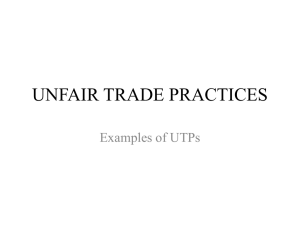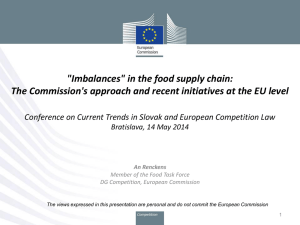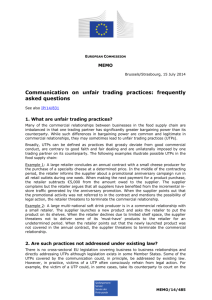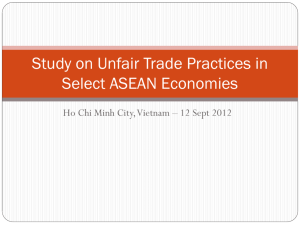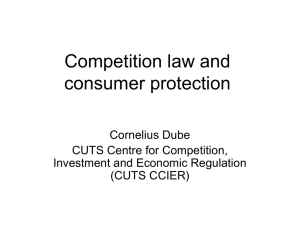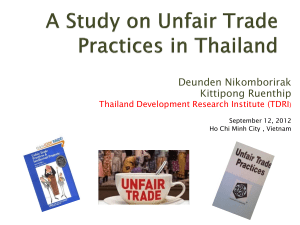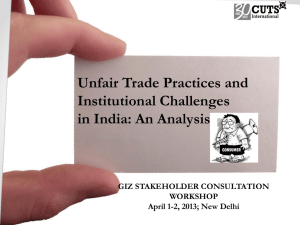Estimated costs of Unfair Trading Practices in the EU Food Supply
advertisement
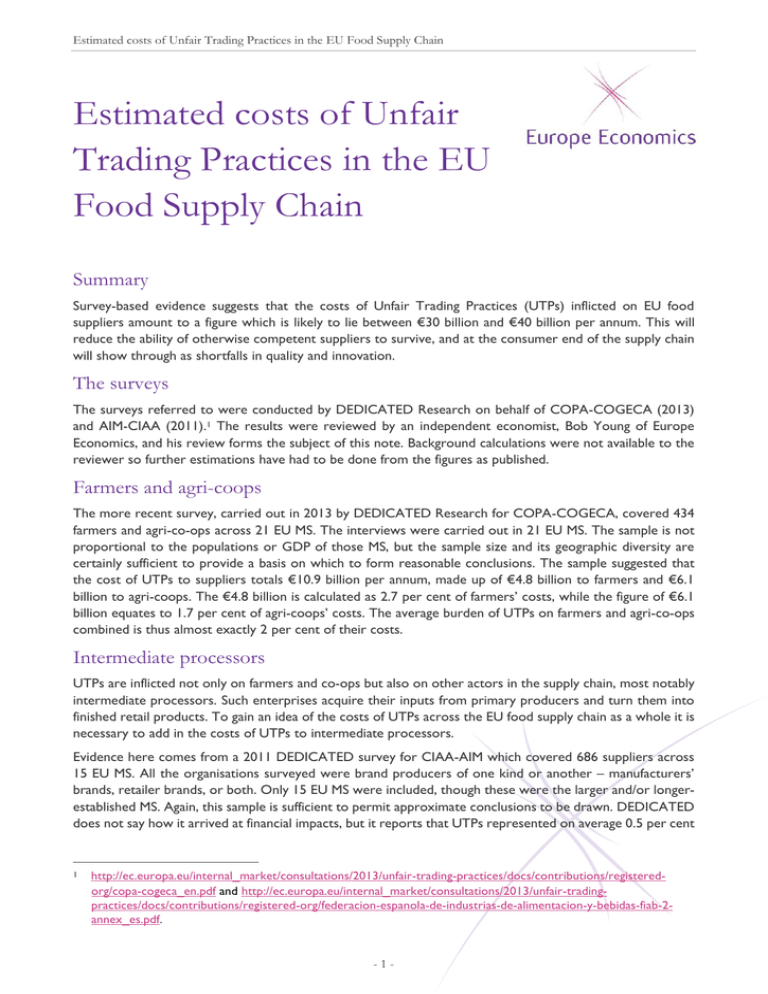
Estimated costs of Unfair Trading Practices in the EU Food Supply Chain Estimated costs of Unfair Trading Practices in the EU Food Supply Chain Summary Survey-based evidence suggests that the costs of Unfair Trading Practices (UTPs) inflicted on EU food suppliers amount to a figure which is likely to lie between €30 billion and €40 billion per annum. This will reduce the ability of otherwise competent suppliers to survive, and at the consumer end of the supply chain will show through as shortfalls in quality and innovation. The surveys The surveys referred to were conducted by DEDICATED Research on behalf of COPA-COGECA (2013) and AIM-CIAA (2011).1 The results were reviewed by an independent economist, Bob Young of Europe Economics, and his review forms the subject of this note. Background calculations were not available to the reviewer so further estimations have had to be done from the figures as published. Farmers and agri-coops The more recent survey, carried out in 2013 by DEDICATED Research for COPA-COGECA, covered 434 farmers and agri-co-ops across 21 EU MS. The interviews were carried out in 21 EU MS. The sample is not proportional to the populations or GDP of those MS, but the sample size and its geographic diversity are certainly sufficient to provide a basis on which to form reasonable conclusions. The sample suggested that the cost of UTPs to suppliers totals €10.9 billion per annum, made up of €4.8 billion to farmers and €6.1 billion to agri-coops. The €4.8 billion is calculated as 2.7 per cent of farmers’ costs, while the figure of €6.1 billion equates to 1.7 per cent of agri-coops’ costs. The average burden of UTPs on farmers and agri-co-ops combined is thus almost exactly 2 per cent of their costs. Intermediate processors UTPs are inflicted not only on farmers and co-ops but also on other actors in the supply chain, most notably intermediate processors. Such enterprises acquire their inputs from primary producers and turn them into finished retail products. To gain an idea of the costs of UTPs across the EU food supply chain as a whole it is necessary to add in the costs of UTPs to intermediate processors. Evidence here comes from a 2011 DEDICATED survey for CIAA-AIM which covered 686 suppliers across 15 EU MS. All the organisations surveyed were brand producers of one kind or another – manufacturers’ brands, retailer brands, or both. Only 15 EU MS were included, though these were the larger and/or longerestablished MS. Again, this sample is sufficient to permit approximate conclusions to be drawn. DEDICATED does not say how it arrived at financial impacts, but it reports that UTPs represented on average 0.5 per cent 1 http://ec.europa.eu/internal_market/consultations/2013/unfair-trading-practices/docs/contributions/registeredorg/copa-cogeca_en.pdf and http://ec.europa.eu/internal_market/consultations/2013/unfair-tradingpractices/docs/contributions/registered-org/federacion-espanola-de-industrias-de-alimentacion-y-bebidas-fiab-2annex_es.pdf. -1- Estimated costs of Unfair Trading Practices in the EU Food Supply Chain of the turnover (not the costs) of the 686 companies surveyed. This is a lower percentage than was identified for farmers and agri-co-ops but is likely to apply to higher revenues. To assess the costs of UTPs in € to intermediate processors, we need to know what their costs or their revenues are. In the absence of disaggregated data across the EU28 we can make only very rough estimates. This we did by first estimating total expenditure on food across the EU, and the details are given in the footnote below. 2 Total retail expenditure on food and groceries across the EU is probably running at a minimum of €1,000 billion per annum, and costs of supply at roughly 65 per cent of this figure, i.e. €650 billion. If the UTPs inflicted on intermediate processors account for 0.5 per cent of their revenues (as per the DEDICATED survey) and we take €650 billion as a proxy for their revenues, then the annual cost of UTPs to intermediate processors is roughly €33 billion. Total costs of UTPs In principle, the figure of €33 billion should be added to the almost €11 billion of costs inflicted on farmers and agri-co-ops, making a total of €44 billion. However, there is likely to be some overlap between the revenues/costs of farmers and agri-co-ops on the one hand and the revenues/costs of intermediate processors on the other. This is because an unknown percentage of farmers’ output goes directly to retailers. Given the approximations inherent in all these calculations, and on the basis of the evidence of the two surveys mentioned, we can estimate with some confidence that the cost of UTPs to food sector suppliers across the EU lies between €30 billion and €40 billion per annum, and probably nearer €40 billion. It is important to remember that UTPs are costs inflicted on suppliers, not directly on consumers. In strict economic terms one could characterise the costs of UTPs merely as a transfer from supplier to buyer, and argue that, if the transfer leaves consumers no worse off, then UTPs do not matter. But in reality they matter very much. UTPs limit the extent to which suppliers can invest back in their businesses and they create a degree of uncertainty (and some analysts have reported fear) which discourages long-term commitment. Over time this will reduce the ability of competent suppliers to survive and will show through as lack of innovation and of quality improvement. In these ways UTPs harm consumers too. Europe Economics May 2014 2 In a statement to the Westminster Keynote Seminar on Food and Nutrition held in London in June 2008, Cathryn Ross (then at the UK Competition Commission) estimated the 2008 annual retail value of UK food sales at £110 billion, and the supply costs of sales at £70 billion. The UK has a population of some 60 million, while that of the EU is now 520 million – 8.7 times that of the UK. If annual expenditure per capita on food in the EU as a whole were the same as in the UK, total EU food sales would amount to 8.7 times £110 billion, i.e. some £957 billion, or €1150 billion at £1 = €1.20. This figure needs adjustment, however, both upwards and downwards. In the down direction, per capita expenditure on food in the less affluent MS is lower than that of the UK; in the up direction, expenditure today will be higher than those of 2008, if only through inflation. In the absence of reliable up to date figures, it is reasonable to conclude that total EU expenditure on food is running at a minimum of €1,000 billion per annum. -2-
